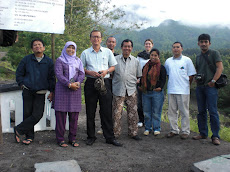But when a second earthquake hit Pariaman West Sumatera in 2009, the damages and loss of life were still at a high rate. 1,117 people were killed, and thousands more heavily injured. Meanwhile the total lost of infrastructure damages - civilian houses, public facilities, government building - has reached nearly 3 million USD.
The question is, how could the second earthquake have still made such a huge loss of lives and damages when the West Sumatera Government had implemented its disaster risk reduction programme since 2007? How effective were the policies of disaster risk reduction, and the Government programs for rehabilitation and reconstruction 2009-2011?
HFI, in collaboration with Oxfam GB, is accordingly conducting research in West Sumatera. The team, consisting of five researchers, is reviewing the disaster risk reduction policies in West Sumatera regarding the rehabilitation and reconstruction action plans. The research started at the end of February and will end in April 2010.
We expect this research to present a clear picture about the problems in implementation of disaster risk reduction in West Sumatera so far, and to monitor its progress. The report should also be able to give some recommendations in Reconstruction and Rehabilitation action Plan in West Sumatera going forward. It’s the hope of the HFI team, and of our partners, that in the event of another earthquake, this research will mean we’ll see a significant reduction in damage and loss of life.

No comments:
Post a Comment